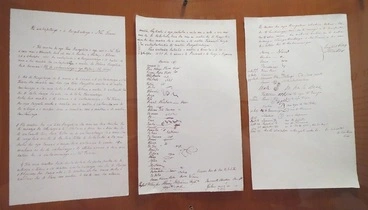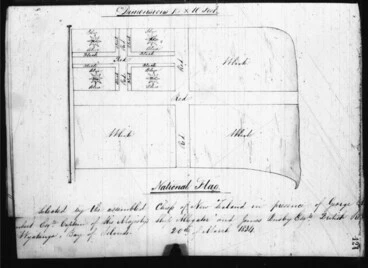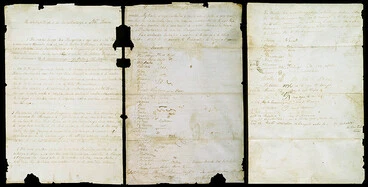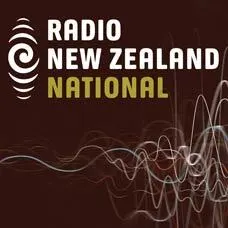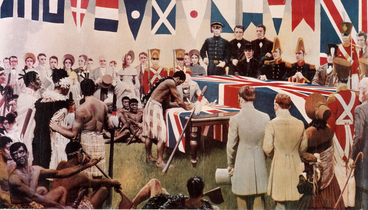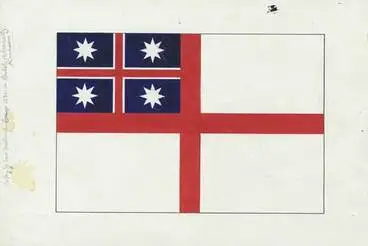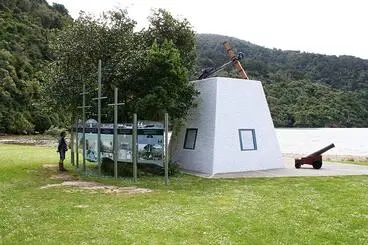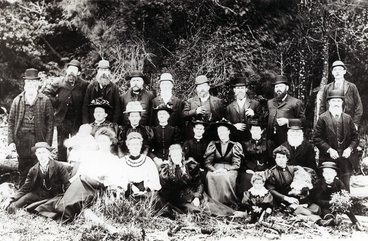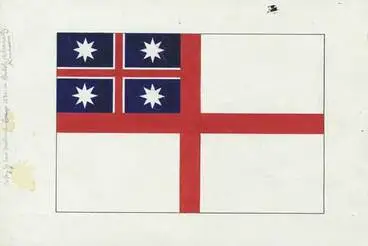He Whakaputanga, English
A DigitalNZ Story by National Library of New Zealand Topics
He Whakaputanga was signed on 28 October 1835 declaring New Zealand an independent nation. These resources cover the declaration, its significance, the articles, translations, signatories and why this document still matters today. SCIS no: 1894406
The need for a flag became urgent when a Hokianga built ship Sir George Murray was seized by customs in Sydney in 1830. The reason? It did not have a flag declaring its nationality so it could potentially have its cargo seized. Missionary Reverend Henry Williams was selected to design the flag. This flag received the majority of votes from the United Tribes of New Zealand at Waitangi on 29 March 1834 became New Zealand’s first recognised flag. James Busby saw the flag as the first step towards getting Māori chiefs to work together on some form of collective government.
United Tribes Ensign
Alexander Turnbull Library
Teaching and learning resources
Services to Schools
Declaration of Independence (New Zealand)
National Library of New Zealand
The United Tribes Flag design, 1834
Archives New Zealand Te Rua Mahara o te Kāwanatanga
180th anniversary of NZ's Declaration of Independence
Radio New Zealand
The Declaration of Independence
Archives New Zealand Te Rua Mahara o te Kāwanatanga
Hearings on Ngapuhi sovereignty continue at Waitangi
Radio New Zealand
The contents of the declaration
Manatū Taonga, the Ministry for Culture and Heritage
More hearings on 1835 sovereignty claim
Radio New Zealand
He Whakaputanga (Declaration of Independence) signatories
Manatū Taonga, the Ministry for Culture and Heritage
Early national flags
Manatū Taonga, the Ministry for Culture and Heritage
United Tribes flag flies at Christchurch City Council
Christchurch City Libraries
United Tribes' flag
Manatū Taonga, the Ministry for Culture and Heritage
The British move towards annexation
Services to Schools
The life of Patuone
Services to Schools
He Whenua Rangatira
Services to Schools
The significance of He Whakaputanga
Services to Schools
He Whakaputanga me te Tiriti
Services to Schools
United Tribes flag
Services to Schools
Lost in translation
Services to Schools
United Tribes flag
Services to Schools
He tohu, ngā taonga tuku iho
Services to Schools
Patuone and commerce
Services to Schools
Corralling consent
Services to Schools
United Nations Declaration on the Rights of Indigenous Peoples
Services to Schools
Independence from Britain
Services to Schools
Why some countries declare independence
Services to Schools
King William IV
Services to Schools
International recognition
Services to Schools
Carwyn Jones on He Whakaputanga
Services to Schools
With the royals, 183 years after we declared our independence
Services to Schools
James Busby
James Busby was born in Scotland on 7 February 1802. He arrived in New Zealand in 1833 to become the first official British resident. In 1834 he held a meeting with the Māori chiefs at Waitangi to select a national flag. Later in 1835, he persuaded 34 chiefs to sign the Declaration of Independence of New Zealand. This document in-part asserted that sovereignty and mana resided with Māori and since Maori were “showing friendship and care for the Pakeha” that the British King continue to act as their protector. It was his version of the declaration that was sent to both the New South Wales government and the Colonial Office in Britain. In 1840 he helped William Hobson to draft the Treaty of
Alexander Turnbull Library
Eruera Maihi Patuone
Eruera Maihi Patuone was principal leader of Ngāti Hao. He was one of the 13 Māori leaders who signed a petition in 1831 asking King William IV for protection from the French. Patuone also signed He Whakaputanga sometime between 29 March 1836 and 25 June 1837 and Te Tiriti o Waitangi in 1840. Baptised and christened Edward March by Henry Williams, he was known as a friend of the Europeans, a supporter of Queen Victoria and also a peacemaker.
Alexander Turnbull Library
Waitangi from the air
Waitangi, one of New Zealand’s most historic sites is located in the Bay of Islands. ‘Wai’ means waters and ‘tangi’ means noisy or weeping. Waitangi was where (in 1834) Māori chiefs gathered to select a national flag, and in 1835 to sign He Whakaputanga o te Rangatiratanga o Nu Tireni, the Declaration of Independence of the United Tribes of New Zealand. On 6 February 1840, the site again made history with the signing of Te Tiriti o Waitangi, the Treaty of Waitangi. This photograph was taken in 1952.
Alexander Turnbull Library
A declaration: He Whakaputanga
Services to Schools
He Whakaputanga/The Declaration of Independence, 1835
Services to Schools
Busby and the Declaration of Independence
Services to Schools
The Declaration of the Independence of New Zealand
Services to Schools
Eruera Pare Hongi
Services to Schools
American Declaration Of Independence
Services to Schools
Treaty of Waitangi
DigitalNZ
Treaty of Waitangi
National Library of New Zealand
New Zealand History
DigitalNZ
First Encounters
DigitalNZ
